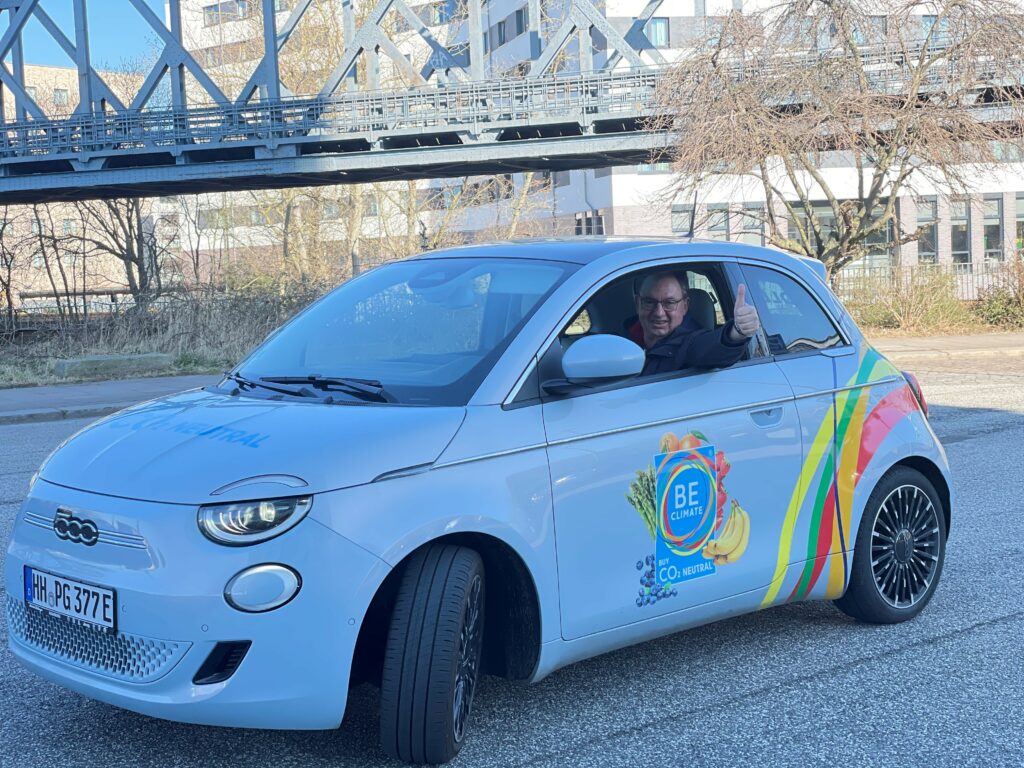With around 20 percent of CO2 output, the transport sector is the third-largest source of greenhouse gas emissions worldwide. Road traffic counts for nearly 96 percent in this segment of transport emissions, and if this amount is to be reduced we must all contribute to make it happen.[1]
One thing is clear: no car is always better! The most climate-friendly way to get around is by bicycle or public transportation. However, there are certain trips for which our company needs a car, which is why we quickly came up with the idea of electrifying our vehicle fleet. Yes, electric cars are being criticized, but it’s the same here as with most other topics in this world – there is just no black-and-white answer. So we set to work and took a profound look at the issue. These are our key findings:
Always keep an eye on the entire supply chain
In addition to the emissions emitted during driving, the entire supply chain must be considered. The supply chain of an e-car is usually “worse” than that of a combustion car. The batteries require rare metals such as cobalt, graphite and lithium, which are often mined under conditions that are very critical in terms of human rights and environmental protection.[2]
Furthermore, around 80 kg of copper is used in an electric car – this is four times the amount of a combustion car. Most of the copper comes from Chile, where copper mining not only increases water consumption to around 2,000 liters per second but where it also contaminates the land with heavy metals as wastewater is discharged unfiltered into the environment on a regular basis. Paradoxically, most of the electricity for the copper mining is generated from coal, which is imported from Colombia and has a correspondingly long and carbon-intensive supply chain.[2]
If the manufacturing process is included in the calculations, an e-car will only compensate its poor CO₂ balance after a driving performance of 50,000-100,000 km. However, thanks to technical developments and an increased share of green electricity in the German power grid, this value is already significantly better now than it was a few years ago.
It all comes down to the right battery and green power
The general rule is this: the smaller the battery or the vehicle, the greater the climate benefit of the e-car. Batteries manufactured in Germany perform much better than batteries manufactured in China due to the lower proportion of coal-fired electricity used in the production process.
The main advantage of an electric car is that it emits neither CO₂ nor nitrogen oxides while driving. However, when it comes to CO2, the power source plays an important role. For an annual driving performance of 10,000 km, an electric car with a consumption of 17 kWh/100 km produces about 0.7 tons of CO2 (including the upstream supply chain with the construction of charging stations, distribution of the power cables etc.) if the car is charged with green electricity. On the other hand, if the power source consists of the regular German electricity mix with its rather high share of fossil energy, the result is 1.7 tons and therefore more than twice as high.
Either way, compared to a diesel or gasoline-powered car the electric car “wins” in terms of lower CO2 emissions. Most of the German charging stations are powered by green electricity anyway, but a quick energy check is still advisable.
Does an e-car make sense?
When it comes to purchasing an e-car, it is certainly helpful to start by asking yourself whether a car is needed in the first place and if so, what it is needed for? After that it is a matter of weighing the main advantages and disadvantages.*[3]
Advantages
- No emissions and no nitrogen oxides while driving
- Reduction of dust pollution
- Very few or no emissions from electricity generation for “refueling” (conventional electricity: 113g CO₂/km; green electricity: 0g CO₂/km)
- High efficiency: also braking energy can be fed back to the battery
- Lower refueling costs compared to a combustion car[4]
- Low maintenance costs (tax, insurance, no emissions inspection, no oil change, fewer wear parts)
- Low niose and low vibration
- E-cars do not pay parking fees in most public parking areas
- Considering its entire life span, an electric car produces around 30% less CO₂ than a gasoline-powered car[5]
Disadvantages
- Low range (150-500km)
- Sometimes long battery charging times (Full charge: up to 12 hours at the house socket, approx. 30 minutes at the charging station)
- Filling station networks are improving steadily but are not yet fully developed nationwide (search apps can help)
- Decline of battery performance at low temperatures (up to 40%)
- Costs of installation of home chargers and insurance (fire protection)
- High purchasing prices
- High emissions from battery production and disposal as well as allegations of poor working conditions (especially child labour) and environmental damage caused by the extraction of raw materials
Our conclusion
E-mobility is certainly not the end of the story. There are pros but also cons. Making an evaluation is complex because there is no black-and-white decision of the “this is good, this is bad” kind – rather, the answer lies somewhere in between.
In our point of view, small cars with a smaller battery (but also a shorter range) are better suited for urban traffic than a combustion car because of the CO2-free driving. Of course, we try to cover as many distances as possible by bicycle, but when a car becomes necessary we rely on e-mobility and always charge our cars exclusively with green electricity. Thanks to this, our colleague Roland can now run all his errands without emitting any emissions. And doesn’t he look smashing doing them in his new BE CLIMATE speedster?

It is clear that electric vehicles alone will not contribute to more climate-friendly road transport – but implemented correctly, they are a step into the right direction.
With our e-mobility, we support the following SDGs:


- https://www.bundesregierung.de/breg-de/themen/klimaschutz/klimaschonender-verkehr-1794672
- https://www.arte.tv/de/videos/084757-000-A/umweltsuender-e-auto/
- * The table does not guarantee completeness.
- https://www.adac.de/rund-ums-fahrzeug/auto-kaufen-verkaufen/autokosten/elektroauto-kostenvergleich/
- WISO, 11.09.2017

















